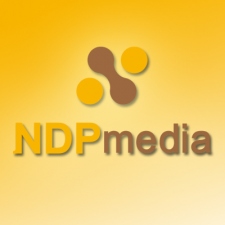The marketing industry has seen huge changes in 2014. Big Data is booming, mobile is shifting the advertising playing field and technology is taking a greater role in determining advertisers’ ROI.
Programmatic buying has been hot in the press lately, with calls for bringing transparency and personalization to marketing platforms.
How are programmatic buying and Real-Time Bidding changing the landscape?
Programmatic marketing is showing exciting possibilities for personalizing ad placements. The great thing about programmatic marketing is that it can offer so much precision. So as a user you’re more likely to see ads that are relevant to you and what you want.
Ads should feel a lot less cumbersome to users, and consumers should see ads for the products and games that they’re really interested in. This is going to make advertisers happy because their ROI increases. The main thing is that the technology will offer a whole new experience for the user.
Advertising can be a sore spot for users. It can take up space and traditional digital marketing has struggled with irrelevant ads.
The stat that you’re more likely to survive a plane crash than click on a banner ad springs to mind. But programmatic has the ability to reduce that risk further on mobile, by using aggregated data to provide relevant ad info to users.
By using programmatic techniques, NDP Media wants to empower brands to reach out to customers at the right time right place through the right medium.
So how does it work?
These ad placements go through various exchanges, and Real-Time Bidding allows programmatic to work.
NDP Media is getting ready to release its DSP which is one stage within the RTB process. DSPs are becoming a bigger part of the mobile marketing infrastructure. They are marketing tools that conducts automatic bidding and can help advertisers achieve a better ROI.

A DSP can offer behavioral and interest matching to help advertisers find new users via mobile. At the same time it can perform behavioral modeling to recommend relevant content. The technology can rapidly analyze trends in the market, and at the same time allow developers to interact with users on a more personal and relevant basis.
Creative is also improving with mobile marketing companies building design teams and offering dynamic creative. Ads can also be built with deep linking support to keep and engage existing users.
DSPs have been around for a while, so why is it being talked about now?
At the Affiliate Summit East, it was the main topic of the talks. It’s changing the way that mobile does marketing. It’s a big trend and this has been in development for a while now.
Marketers are moving towards a more tech-focused approach to advertising, and at the same time mobile marketing has been growing rapidly. The industry is seeing services that allow advertisers to achieve their goals, but that can also have a positive impact on user experience. Stats about getting something back for offering data suggest consumers feel better about this.
DSPs have been a huge problem for the mobile marketing industry. It was thought to be difficult to check KPIs without cookies like you have on websites. Companies are now able to adapt the technology to make it work with various SDKs and APIs.
NDP Media has had a lot of experience in the mobile marketing field.
YeahMobi is our flagship brand and is currently the world’s largest user acquisition platform. They also run one of the world’s largest mobile affiliate marketing networks, so NDP Media overall has a lot of experience in pooling together mobile marketing resources and analyzing Big Data.
What are some of the dangers of the RTB model?
Advertisers worry about fraudulent activity damaging their reputation, and consumers worry about information that can identify them being given out freely.
We use brand safety protection for both advertiser and publisher to prevent wrong content showing up on wrong media. Machine learning models can also predict fraudulent traffic, and protect advertiser from wasting money.
In terms of customers, no PII (Personally Identifiable Information) is used throughout the entire ecosystem. Marketing platforms don’t actually publish specific user identification details. Marketing platforms don’t provide any publisher's user level information to our advertisers. They only have access to the aggregated stats for their campaign performance.
Although RTB and DSPs have actually been around for a while, Google and Amazon being strong players in the field, it’s still growing and moving across different platforms.
That means that there are of course technical difficulties, but these are being smoothed out very quickly. And the move of DSPs across different platforms is really starting to unlock programmatic’s potential to change the marketing environment.























